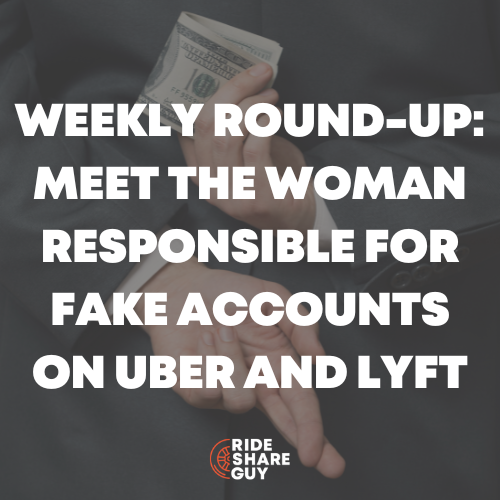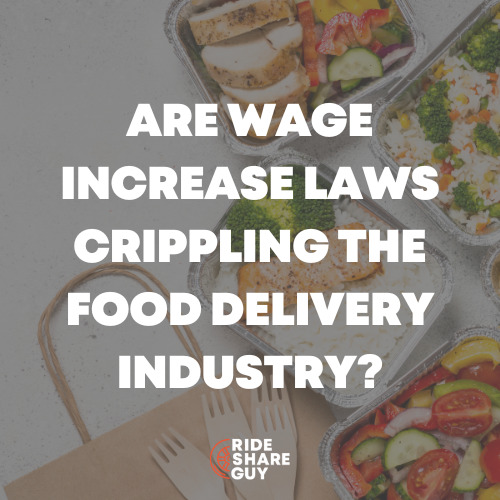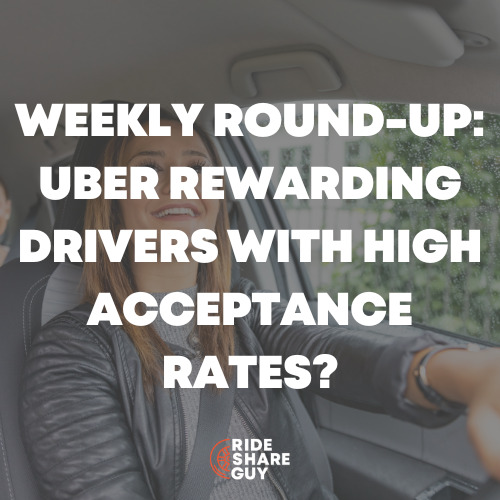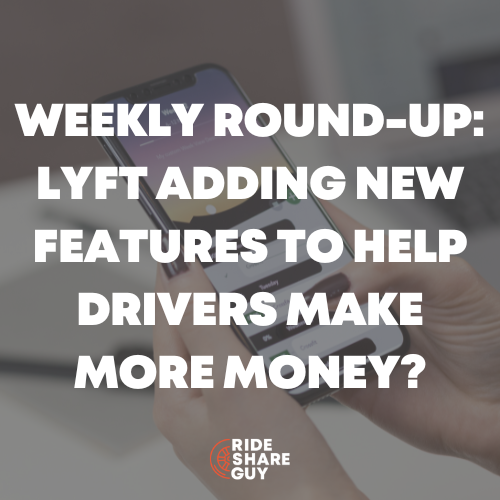Harry here. There’s been a lot of bad news around Uber lately and it seems like Lyft has been in prime position to take advantage. Today, senior RSG contributor John Ince takes a look at Uber’s ‘Greyballing’, what investors think about Uber’s bad press and the long distance ridesharing phenomenon.
How Uber Deceives the Authorities Worldwide [New York Times]
Sum and Substance: SAN FRANCISCO — Uber has for years engaged in a worldwide program to deceive authorities in markets where its low-cost ride-hailing service was being resisted by law enforcement, or in some instances, had been outright banned.
The program, which involves a tool called Greyball, uses data collected from Uber’s app and other techniques to identify and circumvent officials. Uber used these to evade authorities in cities such as Paris, Boston and Las Vegas, and in countries including Australia, China, South Korea and Italy. Greyball was part of a broader program called VTOS, short for “violation of terms of service,” which Uber created to root out people it thought were using or targeting its service improperly.
The VTOS program, including the Greyball tool, began as early as 2014 and remains in use today, predominantly outside the United States. Greyball was approved by Uber’s legal team.
Greyball and the broader VTOS program were described to The New York Times by four current and former Uber employees, who also provided documents. They spoke on the condition of anonymity because the tools and their use are confidential and because of fear of retaliation from the company.
Uber’s use of Greyball was recorded on video in late 2014, when Erich England, a code enforcement inspector for Portland, Ore., tried to catch an Uber car downtown as part of a sting operation against the company. At the time, Uber had just started its ride-hailing service in Portland without seeking permission from the city, which later declared the service illegal.
To build a case against the company, officers like Mr. England posed as riders, opening the Uber app to hail a car and watching as the miniature vehicles on the screen wound their way toward him. But unknown to Mr. England and other authorities, some of the digital cars they saw in their Uber apps were never there at all. The Uber drivers they were able to hail also quickly canceled. That was because Uber had tagged Mr. England and his colleagues — essentially Greyballing them as city officials — based on data collected from its app and through other techniques. Uber then served up a fake version of its app that was populated with ghost cars, to evade capture.
… One method involved drawing a digital perimeter, or “geofence,” around authorities’ offices on a digital map of the city that Uber monitored. The company watched which people frequently opened and closed the app — a process internally called “eyeballing” — around that location, which signified that the user might be associated with city agencies.
Other techniques included looking at the user’s credit card information and whether that card was tied directly to an institution like a police credit union. If those clues were not enough to confirm a user’s identity, Uber employees would search social media profiles and other available information online.
Once a user was identified as law enforcement, Uber Greyballed him or her, tagging the user with a small piece of code that read Greyball followed by a string of numbers. When a tagged officer called a car, Uber could scramble a set of ghost cars inside a fake version of the app for that person, or show no cars available at all. If a driver accidentally picked up an officer, Uber occasionally called the driver with instructions to end the ride….
Outside scholars said they were unsure of the program’s legality. Greyball could be considered a violation of the federal Computer Fraud and Abuse Act, or possibly intentional obstruction of justice, depending on local laws and jurisdictions, …
My Take: As more Uber employees and ex-employees come forward with with tales of intrigue inside the company, the plot thickens. This article explains exactly how Uber managed to evade law enforcement officers using a technique called Greyball. But that’s not all: Uber actually provides managers with a “playbook” that details tactics like identifying cops by drawing a “geofence” around their offices and tracing their credit cards.
Uber defends the practice by pointing out that it’s also used to protect drivers from those who might harm them. According to this article, over 60 people inside Uber knew about greyballing, and their legal department signed off on it. So it’s not just some rogue developers gone off.
The implications for drivers are distressing. Online message boards often include posts by drivers who suspect the company is using phantom cars and other manipulations of the app to deceive or punish drivers who the company feels have jeopardized the company brand one way or another.
Before reading this article, the online posts often seemed far-fetched and conspiratorial in nature. But after this article, driver accusations now seems plausible. There seem to be no limits to Uber’s willingness to push the boundaries of technological invasiveness.
I used ask myself, why would Uber go to such lengths to do such a thing – and could they? Well, the answers to all those kinds of questions are all right here in this well-documented article in the New York Times.
Here’s one really telling excerpt, “enforcement officials involved in large-scale sting operations to catch Uber drivers also sometimes bought dozens of cellphones to create different accounts. To circumvent that tactic, Uber employees went to that city’s local electronics stores to look up device numbers of the cheapest mobile phones on sale, which were often the ones bought by city officials, whose budgets were not sizable. In all, there were at least a dozen or so signifiers in the VTOS program that Uber employees could use to assess whether users were new riders or very likely city officials.” And they’re still doing it.
Uber is deceiving law enforcement officials who don’t want drivers who haven’t been trained or vetted on on the road picking up complete strangers, jeopardizing public safety. So yes, Uber uses very questionable tactics, even phantom cars on the app, to deceive law enforcement officers. If they’ll do that, they what to stop them from deceiving drivers too. For those who like spy thrillers, this is your kind of story.
EXCLUSIVE: Early Uber Investors Slam Travis Kalanick [Vanity Fair]
Sum and Substance: Freada and Mitch Kapor say Uber is at a “tipping point” and rip fellow investors for their “deafening silence.” It’s exceedingly rare for an investor in a private tech company to publicly criticize a portfolio company. Even Theranos hasn’t received so much as a public smack on the wrist from its biggest institutional tech investor, Draper Fisher Jurvetson.
So it was somewhat shocking, within Silicon Valley, when Mitch and Freada Kapor, who in 2010 were among the earliest investors in Uber, penned a scathing open letter to the company’s board and fellow investors, calling out the company for a “toxic” pattern of bad behavior. After working for years “behind the scenes to exert a constructive influence on company culture,” the Kapors said they had given up on reforming Uber from the inside. “If we believed it was too late for Uber to change, we would not be writing this.”
The Kapors’ public censure provided just one of several negative headlines over the past several weeks for Uber, which is now in the midst of its worst-ever public-relations crisis. The spiral began in January, when Uber decided to remove surge pricing at J.F.K. Airport amid a taxi drivers’ strike in opposition to Donald Trump’s travel ban, a move that struck some customers as opportunistic. The ensuing #DeleteUber campaign took off on social media, fueled by C.E.O. Travis Kalanick’s position on a White House advisory board, leading some 200,000 people to delete their accounts.
Kalanick recovered after being caught flat-footed, stepping down from the board and offering millions in legal aid to affected drivers, but was quickly knocked down again by a new scandal. A former engineer, Susan Fowler, published a blog post accusing her managers at Uber of having turned a blind eye to her allegations of workplace harassment and sexism. Since then, dozens of former and current Uber employees have come forward with similar accounts, describing a company whose Hobbesian, sometimes chauvinistic culture is infused into its corporate D.N.A. (Kalanick has said he was deeply upset by Fowler’s allegations, and has launched an investigation.)
Uber, the world’s most valuable private tech company at $68 billion, is now in turmoil. Here, Mitch and Freada Kapor, of Kapor Capital, deconstruct the Kalanick mythos, describe what needs to change at Uber, and call out their fellow investors who have chosen to remain silent.
My Take: One of the big mysteries in the Uber saga is what the investors are thinking as more and more bad news surfaces about the company and its management style. Now at least we’ve got two investors who are willing to go public with their views.
To my knowledge, Freada and Mitch Kapor are the first Uber investors to speak out publicly against the company and its management. Their words are measured, but they carry a bite. They’re not only criticizing Uber’s management, but also the other investors. It’s a candid interview, with two figures whose public profile carries a lot of weight in Silicon Valley. Kudos to the Kapors for speaking out.
I am an Uber survivor. [Medium]
Sum and Substance: When I read Susan Fowler’s story, my blood boiled. I am not able to sleep. My friends kept sending me updates on the story and insisting on letting my own experience be made public. I am sure there are plenty of women still working at Uber’s San Francisco office who have many such stories to tell. Here is my story. I am afraid to make my name public. Let’s call me Amy. For reasons only the #ubervictims know, let’s refer to the villain of this story as Mike#2.
The supervisors were often arrogant, impatient, and aggressive with their expectations. It was normal for our supervisors to openly appreciate the performance of one member over the other and publicly demean members who did not perform as per their expectations. Chauvinistic, racist and homophobic attitudes were far too normal at Uber. Once in a group chat, team members referred to a new Asian American recruit as slanty eye joe.
It was normal for guys to refer to other guys as fags when they didn’t participate in private parties where sex and drugs were involved. It was normal for guys to openly refer to attractive female colleagues as sluts when they refused to go out with them. They had private chats where guys wrote sexual fantasy stories about female colleagues and supervisors where they performed all sorts of demeaning acts on the women.
I confronted the guys on my team whenever they passed lewd comments about female supervisors but never felt comfortable confronting guys who were not in my team. However, one day last summer, long after joining Uber, things changed. This is where Mike#2 enters the story. Mike#2 is a man in his 40s who was pulled from another silicon valley tech giant just two years ago with a multiple six figure salary. Apparently, Travis personally interviewed him and liked his combative style. Married with two children, he is well known for being abusive towards anyone below his pay-scale and for being casually racist towards foreign employees who are here on work permits, and abusive towards women at work.
On a bright and windy day last summer, while working on some updates to Uber’s driver payment system, Mike#2 proposed an idea which to me seemed as unfair to the drivers. It would block the payments to the driver if a customer complained about the ride before a ride ends.
Fortunately, this never made it into the app. When we were brainstorming this idea, I openly spoke up against it. I told them that it was unethical to block a driver’s payments without researching the complaint to make sure it was the driver’s fault. Many of the Uber drivers in some countries do not own the cars they drive. They are owned by rich people who give the drivers a fixed monthly salary and take the money Uber pays the drivers from their bank accounts. So, if a payment is blocked because of a customer complaint, the drivers may go home without the pay they need to feed their families.
When I voiced my concern, Mike#2 looked at me and said “There is no place for ethics in this business sweetheart. We are not a charity.” I was upset to hear such an insensitive comment. I repeated my point and this time, I raised my voice to show that I was unhappy with his attitude. Visibly angry, Mike #2 covered the microphone of the conference phone, he reached over to hold my hand tightly and told me to stop being a whiny little bitch.
My Take: This article is written anonymously by yet another female Uber employee who has come forward with some pretty shocking revelations/accusations about the Uber work culture. I included this because it has an episode that explains a lot about the way Uber views its drivers. This Uber manager – dubbed Mike #2 – wants to essentially confiscate funds from drivers on the basis of unsubstantiated accusations by passengers. This woman objects and is dismissed by the manager as a “whiny little bitch.” Wow…
Long-distance Uber, Lyft drivers’ crazy commutes, marathon days, big paychecks [SF Chronicle]
Sum and Substance: After that 190-mile commute, it’s time to get to work — driving. Barber, 35, drives for Lyft and Uber. She comes to the city most weeks to put in three or four long days behind the wheel, spending nights at a friend’s house in Half Moon Bay. Working 12 to 16 hours a day, she can pull in up to $1,700 after Lyft and Uber take their cuts, but before deducting for gas and other expenses. That’s 70 percent more than what her homebody husband, Tom, 41, makes driving for the services back in Fresno.
Sheer willpower propels Barber, a bubbly woman who is saving her tips to help with expenses to finalize her and Tom’s adoption of their son Ethan, 7. “I don’t typically love driving, but the money is so good,” she said. “My drive to succeed is so high that my adrenaline keeps me going.” She is careful to stop when she can’t keep her eyes open. “I’ll drive in rain or any other weather conditions, but I will not drive when I’m sleepy,” she said.
She’s among hundreds of Uber and Lyft drivers from the far corners of California who log ultra-long commutes to San Francisco. A Chronicle review of San Francisco business registrations shows more than 1,960 drivers from outside the Bay Area, or almost 10 percent of an estimated 20,000 drivers in the city’s database. But because many drivers — possibly up to half — skip paying the $91 annual fee, the actual number is probably much higher. The biggest number who have registered hail from Sacramento County, almost two hours away, but there are drivers who come from as far south as San Diego and as far north as Redding.
A dense concentration of affluent, tech-savvy passengers, higher fares than other areas, frequent rate increases when demand is high, and incentive programs make the city alluring for ride-hail drivers. Like Barber, many of the far-flung drivers commute to San Francisco weekly for a marathon stint of three or four 12- to 16-hour days. Often, they aim for bonuses tied to goals such as working 50 hours or totaling 120 rides a week. Some sleep in their cars and shower at gyms or sponge off in gas station restrooms; some cram together in cheap East Bay motels; some, like Barber, are lucky enough to bunk with friends.
My Take: This is a fascinating look into the long distance driver phenomenon. The driver message boards are filled with snarky comments from San Francisco drivers who take aim at the outsiders that come in from outlying areas like Sacramento, Modesto and Fresno in search of greater income and higher fares. The lesson here is that despite all the bad press about Uber, the gig still puts money in people’s pockets, enough that a whole new class of migrant workers are willing to go a long distance to get in the game.
Readers, what do you think of this week’s round up? Do any of these allegations against Kalanick and Co. shock you?
-John @ RSG
Save
Save
Save





